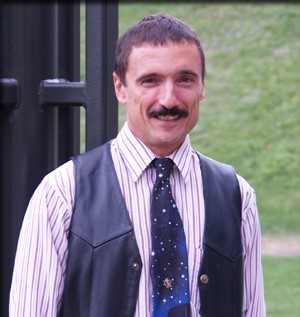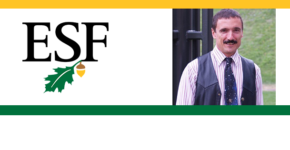 On SUNY Distinguished Professor Week: We take the ground for granted.
On SUNY Distinguished Professor Week: We take the ground for granted.
Russell Briggs, distinguished teaching professor at the SUNY College of Environmental Science and Forestry, examines the complexity of what is below our feet.
Russell Briggs, Distinguished Teaching Professor, has been teaching Soil Science courses at SUNY College of Environmental Science and Forestry (ESF) since 1995. As Director of the Forest Soils Analytical Laboratory, Dr. Briggs oversees inorganic chemical analyses of plant tissue and soil samples. He also serves as the Director of the Division of Environmental Science at ESF, which provides oversight for the B.S. in Environmental Science, the B.S. in Environmental Health, and the Graduate Program in Environmental Science. Russ is a past Chair for the Forest, Range and Wildland Soils Division of the Soil Science Society of America. Prior to joining the faculty at ESF, he was Associate Research Professor at the University of Maine Cooperative Forestry Research Unit. His research interests include land management impacts on water quality and site productivity, Christmas tree nutrition, and carbon cycling in terrestrial systems.
Soil: The Biogeochemical Membrane at the Intersection of Planet Earth’s Global Systems
A warm summer day’s stroll down a path in a forest or across the front lawn sometimes leaves a false impression of stability. The ground is merely there, supporting our weight and we do not sink into the earth. Caught in a rainstorm during such a walk, many take for granted the fact that water is not immediately pooling up and carrying us away in a rising torrent. Our mind glosses over and fails to appreciate the dynamic exchange of water taking place beneath our very feet.
We can see the rain coming down, infiltrating into the soil, where it is either stored or makes its way through the complex system of pores in route to streams or even groundwater. As the rain stops, movement of water continues but at a slower rate as it is attracted to the smaller pores and stored for a while. As water empties from those pores, oxygen from the atmosphere makes its way into the soil while carbon dioxide from respiration of roots and soil animals makes its way out. As the pores shift from water-filled to air-filled, the movement of radiant energy from the sun is altered, influencing soil temperature.
Without realizing it, we are witnessing soil in its role as the biogeochemical membrane. This biogeochemical membrane, which may vary in thickness from a few inches to tens of feet, acts as the traffic control center, regulating the fluxes of energy, water and gas among the primary earths systems: the atmosphere, the lithosphere, and the hydrosphere. The well-being of 8 billion people depends entirely on the capacity of this soil system to function. We cannot afford to treat this precious research like dirt.


Comments
3 responses to “Russell Briggs, SUNY College of Environmental Science and Forestry – Soil: The Biogeochemical Membrane at the Intersection of Planet Earth’s Global Systems”